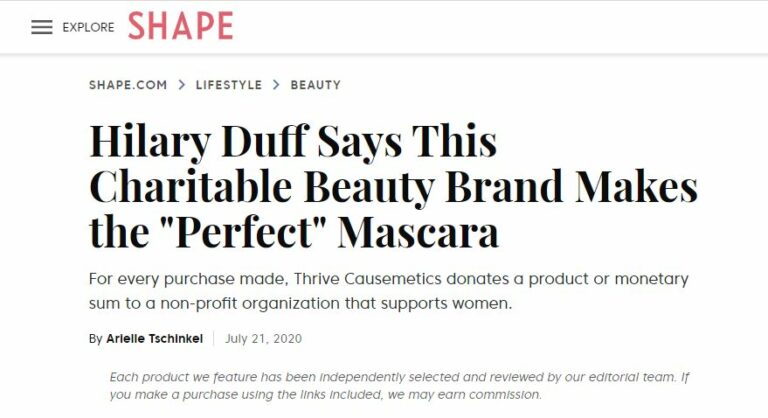Did you know that 61% of people now use an Adblocker tool when surfing the web?
People are sick and tired of being bombarded with advertising that’s in their face and not relevant.
They’re craving high-quality, captivating content — things they’re willing to share, comment on, like, or write about, that in turn is good for their search strategy (SEO).
Additionally, a Nielsen study recently found that around 83% of people say they completely or somewhat trust the recommendations of friends and family. Those shares and likes are important endorsements for your content.
If paid media is the more instant fix for brands to get eyeballs and conversion, then we can look at earned media as more of the long-term strategy with a bigger payout.
In this column, you’ll find four different types of earned media — and who is doing it right — to inspire your own content marketing mix.
But first, I want to quickly run through the definitions of paid, earned, and owned media in case some of you are fresh faces to the digital marketing world.
Types of Media in Your Marketing Mix
Paid Media
Paid media is exactly as it sounds; this is media or content that you promote or sponsor to drive awareness, traffic, and conversions for your brand.
Types of paid media include:
- Display Ads.
- Search engine marketing (SEM).
- Social media advertising (social PPC).
- Video ads.
- Radio ads.
- Podcast ads.
- Advertorials and sponsored content.
Owned Media
Owned media is the content your brand is putting out on its own properties. These things are like the:
- Website.
- Emails.
- Newsletters.
- Direct mail.
- Social media profiles.
Earned Media
Earned media comes in various forms and is somewhat harder to accomplish, but the opportunities it generates for your brand can be outsized, too.
Examples of earned media are:
- A blogger or individual writing about your product.
- A blogger or individual posting a video about your product or service (think of unboxing videos that are not paid for or solicited).
- When the press mentions your brand in an article.
- Customer reviews on Google My Business, Facebook, Yelp, and other platforms.
- Word of Mouth (WOM) marketing (if it’s done in the ways of referral marketing, influencer, or affiliate marketing). While it is a type of earned media, it can also be paid and owned.
Thrive Causemetics | Publication Review
Thrive Causemetics is a cosmetics and skincare company founded in 2015. According to the website, for every product purchased, they donate “to help a woman thrive,” and in 2020 gave back to over 200 non-profits.
Their foundation (pun intended) is already solid. They have a great product line that also helps the greater good.
If you’re on social media, you’ve probably come across them at some point.
You’ll find various reviews like this one that is unpaid. While they don’t have an affiliate program, they do have a referral campaign.
Just on Instagram alone, if you do a search for [site: instagram.com + “thrive causemetics] you’ll find over 148,000 results for that search term alone.
Additionally, you will see various unpaid posts written about them. Yes, those publications “may obtain commission” but they also have a reputation to protect, too.
There’s nothing like it when an online publication will pick your product and write about it. This type of street cred is huge.
Additionally, doing another simple search for [Hilary duff thrive causemetics] yields close to 6,000 results.
Fabletics X Tess Christine Sweepstakes | Influencer Marketing
Here’s another brand doing exceptional things with earned media.
Fabletics is an activewear company targeted at men and women. They have a subscription-based business model and consider social media engagement one of their top key performance indicators.
At the start of the pandemic, Fabletics partnered with an influencer named Tess Christine (@tesschristinexo).
The brand was giving away a $500 gift card and Tess’s followers were encouraged to tag three of their friends on one of her Instagram posts in order to enter the giveaway.
Well, the results were huge for the brand. The post received over 40,000 likes and over 2,000 comments.
Brands like Blue Apron and Adidas are working with influencers more and more in order to expand their brand’s reach and engage new demographics to their brands.
Dogecoin x Marques Brownlee | Video Product Reviews
Marques Brownlee has a YouTube channel with various technology-focused product reviews.
He has over 13 million subscribers and 2,434,833,787 views to his channel (at last count), so you know any product review will get a huge amount of attention. Some product reviews are sponsored, while others are not.
On February 15, 2021, Marques Brownlee posted a video of Dogecoin, a cryptocurrency invented by software engineers Billy Markus and Jackson Palmer.
The video gauged over 2 million views, over 12k comments, and 118k likes.
Instant Pot | Online Reviews
Prior to influencer marketing, brands typically had to spend a significant amount of money in order to have their product seen.
The founders of Instant Pot had a different idea.
In 2010, this solid kitchen product was developed to speed up slow cooker times, so anyone could cook a chicken breast in about 10 minutes.
While Instant Pot didn’t have huge sales in the beginning, the brand knew it had a great product that would hook users once they saw it in action.
That same year, Instant Pot began to develop brand recognition and online exposure from food bloggers and customers.
While they could have invested budget into paid advertising, the founders knew that word of mouth could be far more lucrative and powerful and found ways to get people to discuss how great the Instant Pot was.
Additionally, they would also implement giveaways and contest to incur additional new users.
If you head over to Facebook, you can see hundreds of Facebook pages dedicated to Instant Pot. Their main group page has over 3 million followers alone.
As you can see, earned media is a very profitable tactic in order for your brand to be seen, and also bring in additional revenue.
What other brands have you seen implementing marketing tactics focused on earned media?
___
by Victoria Shepherd
source: SEJ










